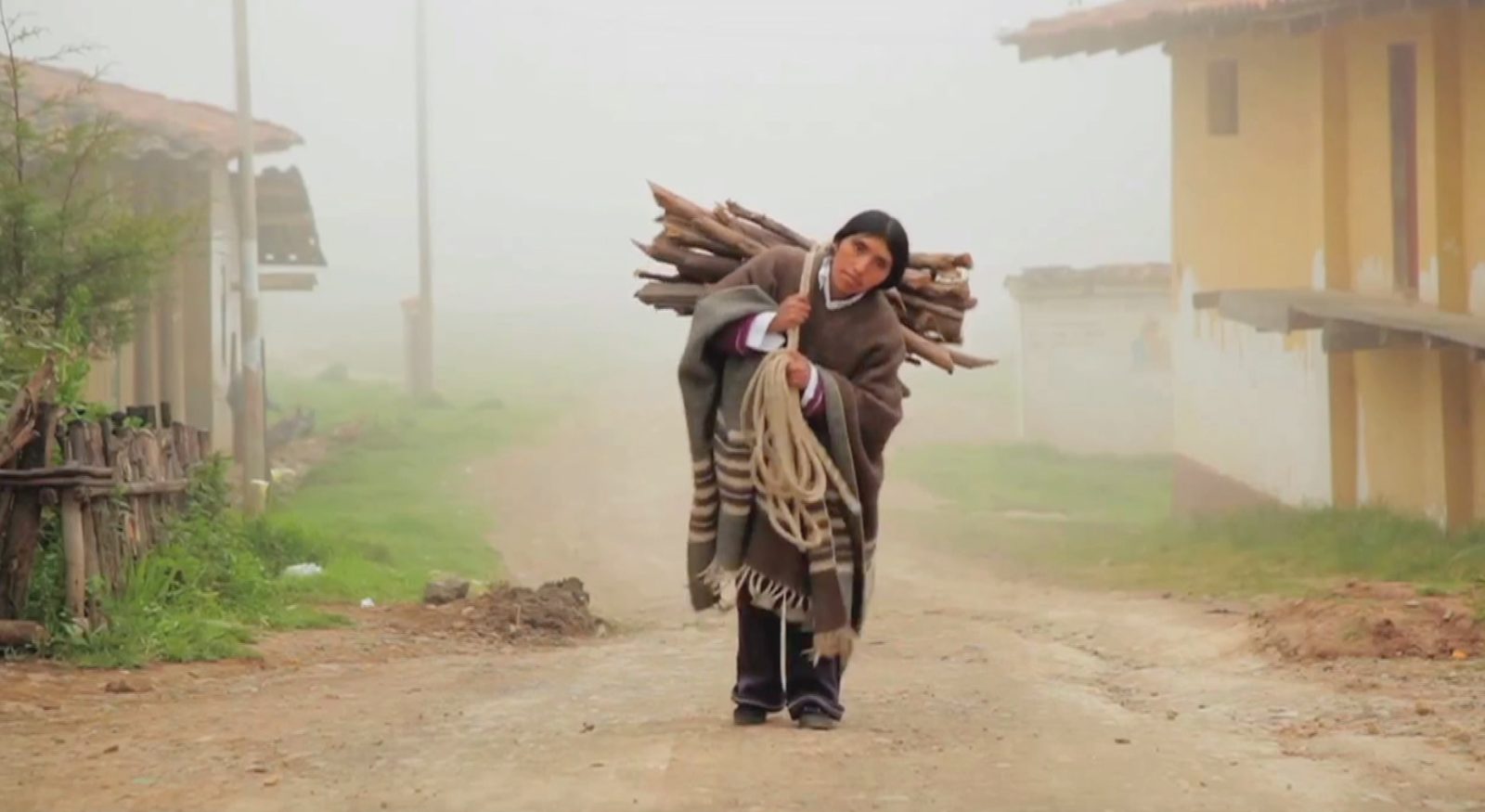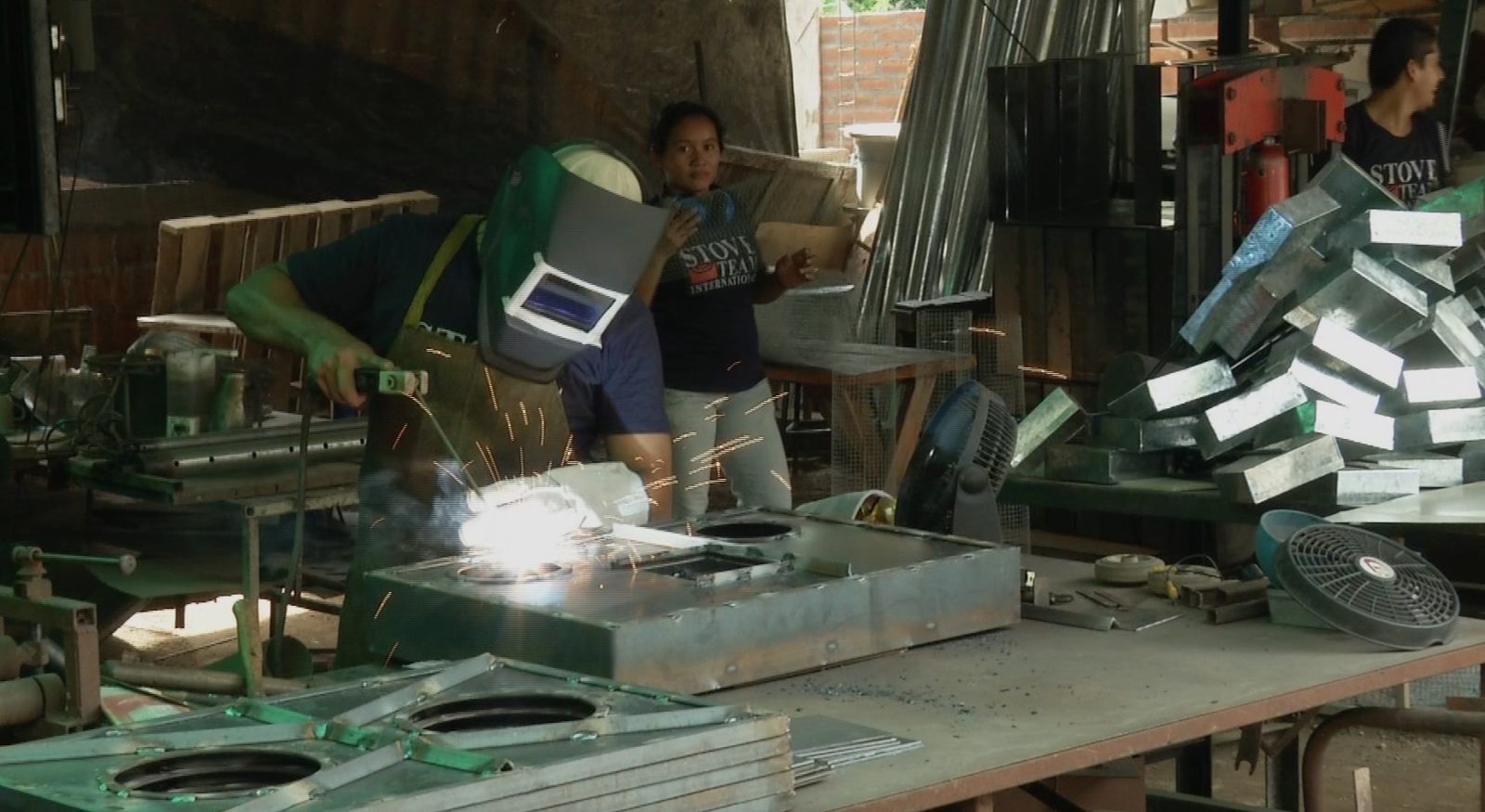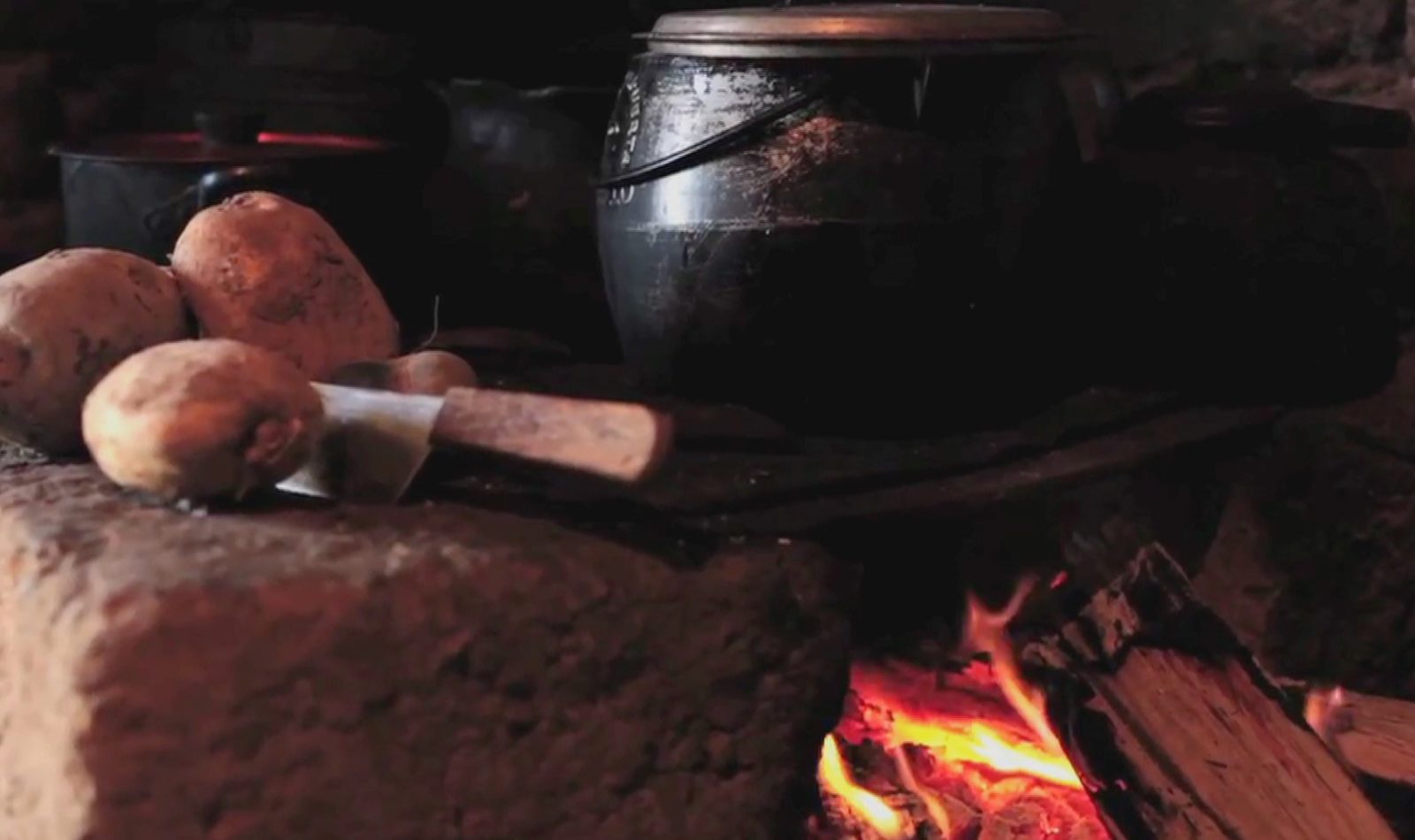JUDY WOODRUFF: Next: In El Salvador, one group is trying to solve a major problem by tackling it on a small scale.
JULIA ROBERTS: Did you know that one of the deadliest threats facing women and their families around the world today is right inside their own home?
FRED DE SAM LAZARO: Julia Roberts is a celebrity spokesperson for a renewed effort to provide cleaner stoves to the estimated three billion people worldwide who rely on open fire indoor cookstoves.
These stoves and the smoke they produce are blamed for two million deaths each year from lung cancer and burns. Their fires are a major source of greenhouse gases, their fuel a major cause of deforestation.
There have been many efforts so far to provide improved stoves, but with only scattered small-scale success.
RADHA MUTHIAH, Global Alliance for Clean Cookstoves: These are what, five or six of 65, 70 different stoves that are out there.
FRED DE SAM LAZARO: Radha Muthiah heads the Global Alliance for Clean Cookstoves, which was set up in 2010 to bring some coherence to the various efforts.
Working under the U.N. foundation and with a $100 million U.S. government grant, the agency is trying to find out what works and what doesn’t work to rate the various models for efficiency and to fund research into new ones.
RADHA MUTHIAH: The things that we learned from the past efforts are that in the assumption that, oh, if we provide a cleaner cookstove, that is far better than a three-stone fire, so, of course every household member would want that.
But cooking patterns are different. Cultural habits are different. And people everywhere are the same. We would like to have some say. We would like to have some choice.
FRED DE SAM LAZARO: One enterprise in Central America believes it offers the right choice. In rural El Salvador, Gustavo Pena is the chief traveling salesman for a cookstove made in his factory, one that he promises housewives can vastly improve their lives because it burns fuel more efficiently, meaning it needs less firewood and emits less smoke.
GUSTAVO PENA, stove factory owener (through interpreter): The stove uses very little firewood because the heat is concentrated in the chamber.
We normally raffle one stove. The idea is to leave the stove in the community, so that everyone can see it, how it performs, how it really saves wood.
This is going to be a fiberglass mold.
FRED DE SAM LAZARO: Pena is a native of central El Salvador who lived previously in the U.S. and Canada. He got started in the business when he met Nancy Hughes, the founder of StoveTeam International.
Hughes is a 70-year-old Oregon native who began visiting this region about 14 years ago as a volunteer.
NANCY HUGHES, founder, StoveTeam International: After I was widowed, I decided to reinvent my life, so I went on a medical mission to Guatemala.
And I did what they asked me to do, which was cook in the kitchen. And a young woman came into the kitchen whose hands had burned shut – been burned shut from falling in an open cooking fire.
FRED DE SAM LAZARO: Such experiences drove Hughes to look for ways to provide cleaner, safer stoves. A noted engineer and friend, Larry Winiarski, offered to design one, and with Pena ready to manufacture it, Hughes went to her local Rotary Club and asked them for startup funds.
NANCY HUGHES: I was standing around with these Rotarians and they said, you can start a factory in El Salvador. And I was like, I’m over 65. I’m not doing that. And so one of the people on the team said, listen, we have got a great stove. We have got a guy who wants to produce them. We can raise money, so let’s raise money and place an order for stoves with him, and let him go and let him own the factory, and we don’t have to do it.
That was very appealing.
FRED DE SAM LAZARO: With similar Rotary Club funding, StoveTeam has since set up six factories across Central America and Mexico, each owned by a local entrepreneur. It’s a very different approach than most aid groups. They have often imported mass-produced stoves and given them out for free or at almost no cost to users.
One reason StoveTeam says it’s been successful is that its stoves are locally produced. And their design is informed by local food customs. The biggest problem, most women here probably could not afford to buy one.
GUSTAVO PENA: After a couple of weeks, we come back. We get a list of people that really want the stove. And then we contact some NGOs that can bring them over to the community, and they make an application to see if they apply to get a discount for the stove.
FRED DE SAM LAZARO: Discount, not giveaway. Pena says it costs about $40 to make one of these models. He sells them for $60. But aid groups subsidize most sales.
Patricia Savaleta works for the charitable arm of a nearby power utility. She agreed on this day to help with the purchase of 200 stoves, bringing their price down by about 50 percent.
PATRICIA SAVALETA, (through interpreter): We prefer to charge them something for the stove. People won’t appreciate them if they don’t pay for them.
FRED DE SAM LAZARO: She and many other development experts say if people are going to pay for something, they need to be convinced it’s worth it. This may seem like common sense in a market-based system, but in the business of aid, historically, few donors have asked their recipients’ opinion, one reason experts say many aid projects fail.
RADHA MUTHIAH: It’s a big lesson. I think it’s a big lesson of, you know, really not just assuming that the users as beneficiaries, but users as consumers and active participants in the whole process. I think…
FRED DE SAM LAZARO: That you should talk to.
RADHA MUTHIAH: Absolutely.
RADHA MUTHIAH: So – and I think its a lesson broadly in development. It extends outside of the cookstove space as well. In the past, I think, in development, you have heard the term beneficiary being used a lot. And I think that speaks volumes.
FRED DE SAM LAZARO: The lessons not learned in the past can be measured by how many people stopped using the stoves. A 2012 Harvard-MIT study followed 2,600 households in India that were provided improved stoves. It found that most people quickly reverted to their old methods. They weren’t able to start and use the improved stoves properly or maintain them. As a result, there was little benefit to human health or air quality.
StoveTeam wants to make sure the 40,000 stoves it has sold so far remain in use and in working order. It’s training teams to visit buyers regularly and survey the use of their stoves.
The plan is to fund these home visits through the sale of carbon credits. Since the stoves reduce emissions, Pena’s company gets credit that it can sell to manufacturers, most of them in Europe, who use them as offsets for their own pollution.
Firewood consumption before and after a stove is purchased are measured to determine the size of the credit.
NANCY HUGHES: We know through laboratory and field testing they save 50 percent of the wood that is being used normally in an open fire, and they reduce carbon emissions and particulate matter by 70 percent.
FRED DE SAM LAZARO: While StoveTeam tries to protect a business model that promises to be sustainable, the Global Alliance say the overall effort will need to be vastly scaled up and made attractive to commercial investors. Its goal is to provide 100 million clean stoves by 2020.
GWEN IFILL: Fred’s reporting is a partnership with the Under-Told Stories Project at Saint Mary’s University in Minnesota.
A Global Issue
An estimated 3 billion people worldwide rely on open-fire cookstoves that burn wood, dung or crop residues for food preparation. But the smoke from these stoves harms the environment and can be blamed for some 2 million deaths every year. Fred de Sam Lazaro reports from El Salvador on efforts to provide cleaner stoves to people in developing countries.
Related Links: Stove Team International,Global Alliance for Clean Cookstoves

Around 3 Billion
people worldwide rely on open fire indoor cookstoves.


